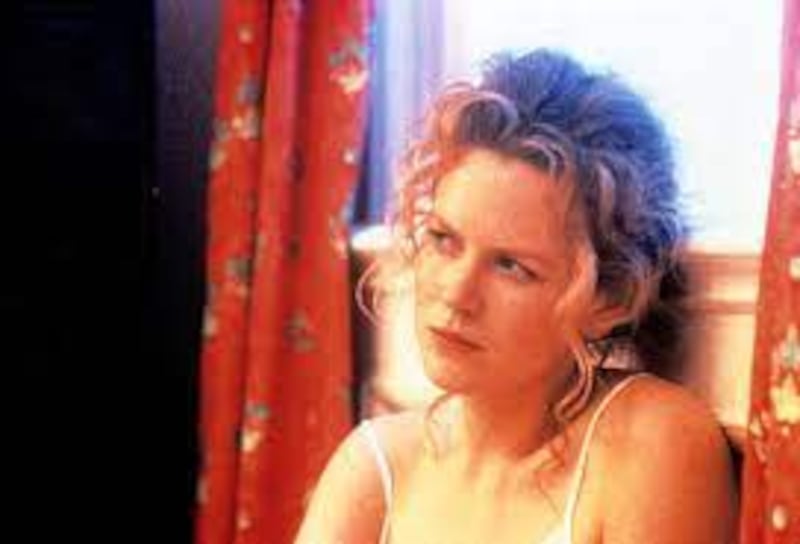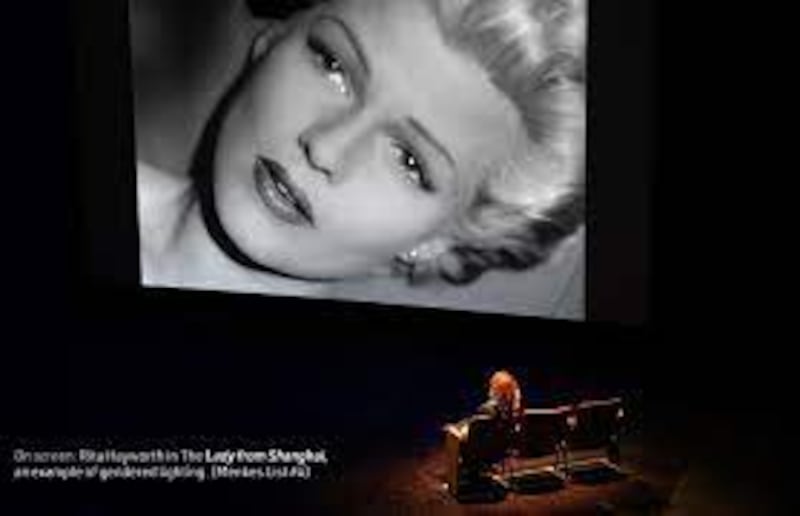Halle Berry emerging slowly from the ocean in a bikini in Die Another Day. Scarlett Johansson’s diaphanous underpants as Lost in Translation opens. The extreme close-ups of Rosie Perez’s body parts in Spike Lee’s Do the Right Thing.
Plus ça change.
First published in 1975, Laura Mulvey’s Visual Pleasure and Narrative Cinema continues to provide an unsurpassed framework for understanding the ways in which Hollywood cinema constructs and reinforces gender roles through the use of cinematic techniques.
Mulvey’s seminal argument – that Hollywood cinema operates according to a “male gaze” that objectifies women and reinforces male power – is evidenced in the ways in which women are framed, lit and shot in films, often as objects of male desire and fantasy. The male gaze also works to position the spectator, who is presumed to be male, as an active and dominant subject, while the female characters are passive objects to be looked at.
Masters 2025: Tee times, what TV channel is it on, Augusta weather, players to watch
Trying out Lidl’s new Thermomix dupe: ‘I don’t take direction from a robot well’
Darragh Ó Sé: Páidí told me that however much of a cowboy he was, Micko was 10 times worse
Michael McDowell: Tariff war a major self-inflicted wound for the United States
This gendered power dynamic, in turn, is reinforced through the narrative structure of Hollywood cinema, which typically positions male characters as active agents and female characters as passive objects of desire.
Almost five decades on, in an era when voguish debates about representation have ushered in female superheroes and colour-conscious casting, Mulvey’s 1975 thesis remains terrifyingly relevant. She’s one of many contributors to Nina Menkes’s hard-hitting new film essay, Brainwashed: Sex-Camera-Power, which expands upon Mulvey’s ideas and on Menkes’s own 2017 essay The Visual Language of Oppression: Harvey Wasn’t Working in a Vacuum.
“The Harvey Weinstein story broke in October 2017, I think, and I wrote the essay in November 2017,” recalls Menkes. “The essay tied together the visual language of cinema, Laura Mulvey’s to-be-looked-at-ness, and the problems of sexual assault, sexual abuse and employment discrimination against women. I was basically saying this is all one thing. And people got really excited about the essay and connecting the Me Too movement to the language of cinema and rape culture. The article went viral, which was a shock, and I got invited all around the world to give my little presentation. And I would be literally mobbed by people afterwards, mainly women, saying: please, please make this into a film because we need this movie.”

Thus, in Brainwashed, more than 175 clips from films as varied as Francis Ford Coppola’s Apocalypse Now and Brian De Palma’s Carrie expand on that hypothesis. Menkes dissects much-admired works of cinema using the related ideas of gendered gaze, fragmented body parts, and lingering, objectifying camera movements to demonstrate how framing and composition can be used to disempower women.
Did we really need fragmented bodies and a pervy male gaze to punctuate Bombshell, a film dramatising how three female news anchors (played by Charlize Theron, Nicole Kidman and Margot Robbie) took on Fox News head Roger Ailes and his sexist “leg cam” culture?
Shot after shot within Brainwashed illustrates that – sometimes within the same sequence – men are typically lit using 3D techniques while their female counterparts are softly lit, using flat, 2D, glamorising techniques. Placed side by side, how Tom Cruise and Nicole Kidman are respectively lit and framed in Stanley Kubrick’s Eyes Wide Shut look like designs from different movies.
[ Harvey Weinstein’s conviction is good. But it hasn’t changed the worldOpens in new window ]
Elsewhere, framing can be used to further marginalise a female character within the narrative, or beyond the 3D space of the narrative. This allows for a more demeaning form of sexualisation, such as Ana de Armas’s gigantic holographic character from Blade Runner 2049.
Interviews with academics and filmmakers including Julie Dash, Eliza Hittman and Catherine Hardwicke add weight to the visuals.
“I wasn’t sure when we finished the film, is this all going to be too obvious for people who are cinephiles?” says Menkes. “But then the director of Sundance told us: ‘After seeing your film, it totally changed how I look at every other film.’ And I thought, well, if you’re saying that, I know it’s not too obvious. She’s probably watching 500 films a year.”
In this spirit, IndieWire’s Kate Erbland has suggested that “Nina Menkes’s eye-opening documentary will forever change how you look at films”. Writing in the Guardian, Peter Bradshaw conceded: “I have watched the swimming pool scene in Scorsese’s Raging Bull dozens of times, yet only after watching Brainwashed have I appreciated the way that Cathy Moriarty’s image is detached from the male speakers.”

Other commentators have been less open to deconstructions of their favourite texts.
Some critics have taken issue with Menkes’s use of fragmented body scenes from Paul Thomas Anderson’s Phantom Thread, Julia Ducournau’s Titane and Lorene Scafaria’s Hustlers, on the grounds that those films are defined by gendered power struggles.
At least one review questions the director’s citation of Maïmouna Doucouré's notorious Cuties, a film that controversially utilises a paedophilia gaze to critique the hypersexualisation of young girls. Other viewers have been shocked by Menkes’s criticisms of female filmmakers, specifically the film’s compelling takedown of Kathryn Bigelow.
“A lot of people have been upset about that,” says Menkes. “They ask: how can you attack her? I’m not really attacking her. I’m just showing how the system is deeply ingrained. I’m not an essentialist. I don’t believe that if you have a female body, you’re going to do one thing, and if you have a male body, you’re going to do something else. It’s a system which has infiltrated the consciousness of men and women, not to mention everyone in between. It’s a system that’s detrimental to both men and women, although it’s much more detrimental to women. I do think that this kind of subject/object split ultimately doesn’t hurt men so much in the job market. But it hurts people in their personal relationships because it distorts personal relations.
“Bell Hooks, that wonderful writer, has said that patriarchy has no gender. Men can be allies, and women can be patriarchs. Men are going to be on board with patriarchy more because they stand to benefit in very obvious ways. Women who go along with the agenda are the ones who are allowed to get ahead. Kathryn Bigelow was very discriminated against, even at the so-called top. So it was important because if you look at this Academy Award-winning director, her film sits perfectly into this law of shot design. And then, I was looking on IMDb, and, holy shit, every single head of department on that film was male.”
The way that I made the films that I kept making was to beg, steal, borrow and ask my friends to work for free. This is after I’ve been at Sundance and after I’ve won the Los Angeles Film Critics award. After I’ve got rave reviews from big publications
By now, Menkes is well accustomed to controversy. The American filmmaker, writer, academic and all-around straight-shooter is known for her experimental and confrontational work. To counteract the effects of the male gaze and patriarchal narrative structures in Hollywood cinema, Laura Mulvey calls for a feminist counter-cinema that would subvert traditional cinematic techniques and narratives and offer alternative representations of gender and sexuality. Menkes is already there. Since 1986′s Magdalena Viraga – the story of an alienated young woman who becomes involved in Los Angeles’s underground punk scene – the writer-director’s features and shorts have been visually striking precisely because they exist outside the dominant cinematic language.
Though hardly mainstream, her explorations of gender, power and identity – including modern Oedipus reworking The Bloody Child (1996) and the trippy Phantom Love (2007) – have received numerous awards across international film festivals, including Berlin and Locarno.
In 2019, Menkes’s Queen of Diamonds, a 1991 drama starring the director’s sister Tinka as a blackjack dealer in Las Vegas, was restored by the Academy Film Archive and Martin Scorsese’s Film Foundation. The resurgence of interest in Menkes’s work is part of a larger revival among female film practitioners.
“Things have changed in the past 5½ years,” says Menkes. “You know, like Eliza Hittman mentioned in the film, in 2013, that was 10 years ago, she couldn’t get arrested. She couldn’t get an agent, she couldn’t get a distribution deal. That started to change in 2015 with the Maria Giese action against the studios for violating laws about sex discrimination. That was closely followed by the Me Too movement. Those two pieces are the what and why.”

Maria Giese’s career began in the 1990s with When Saturday Comes, a Sheffield-based football drama starring Sean Bean, Pete Postlethwaite and Emily Lloyd. She would never work again as a paid director. Menkes’s career has, similarly, never been easy. Brainwashed also features contributions from Julie Dash, whose 1991 feature Daughters of the Dust became the first full-length film directed by an African-American woman to obtain a general theatrical release in the US. Dash has yet to make another theatrical feature.
“Both Julie Dash and I were at Sundance together,” recalls Menkes. “Her film was really noticed. And we got no offers. I got a Guggenheim Fellowship at the time which was $27,000. I got a grant from the Independent Television Service for $65,000. That was the biggest grant of my career. The way that I made the films that I kept making was to beg, steal, borrow and ask my friends to work for free. This is after I’ve been at Sundance and after I’ve won the Los Angeles Film Critics award. After I’ve got rave reviews from big publications. Queen of Diamonds was recently re-released and made Art Forum’s 10 best films of the year. That was made back in 1991 after I spent I don’t know how many days and hours asking: Can you donate make-up? Can you donate coffee? Can you donate doughnuts? Can you donate lunch? We made Queen of Diamonds at a hotel in Las Vegas because it wasn’t one of these huge corporations and the owner let us shoot at the casino for three weeks. The fact that I continued was not because someone gave me money. It was because I was so driven to get my vision out in the world.”
Brainwashed: Sex-Camera-Power is in cinemas















